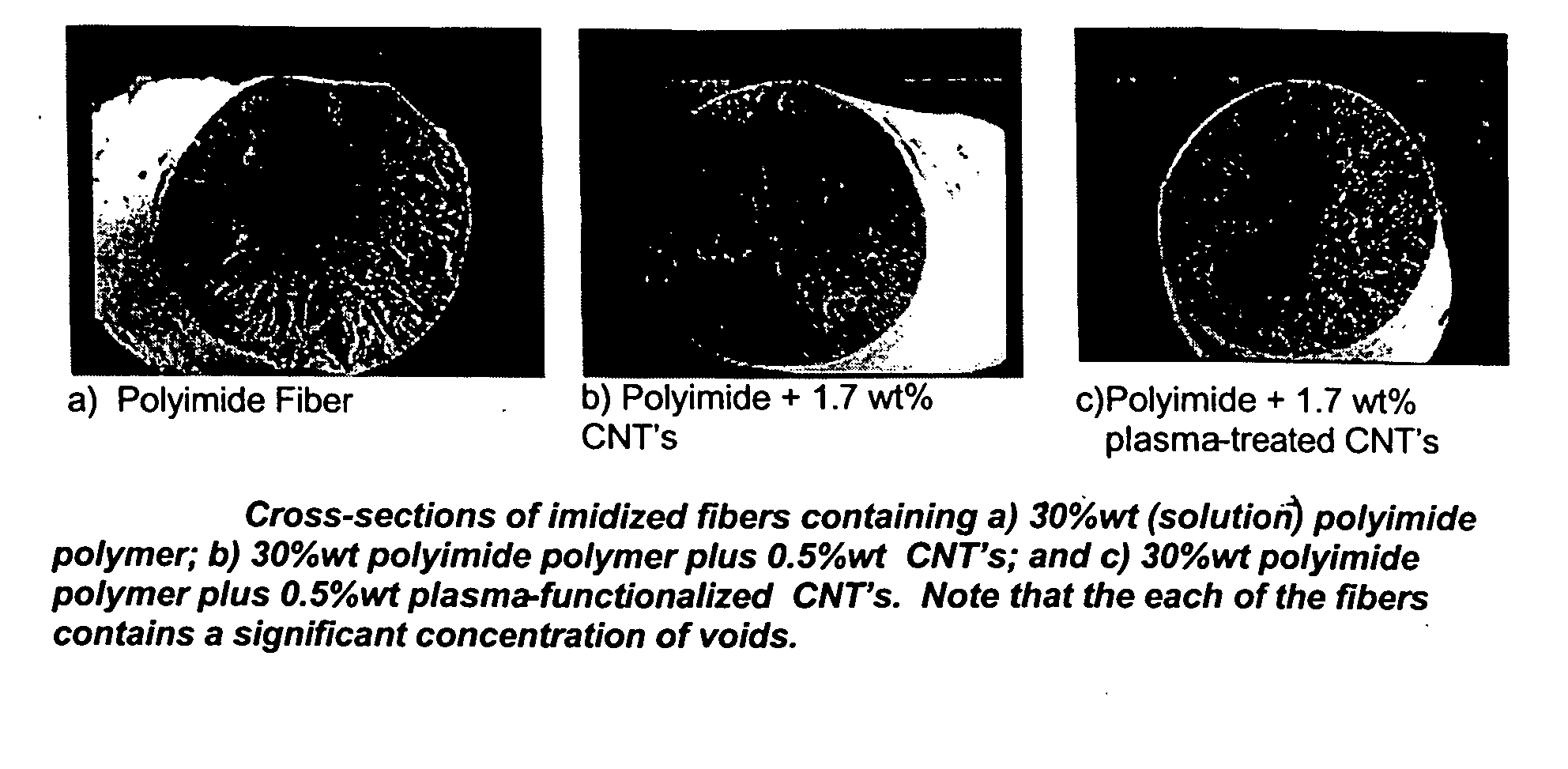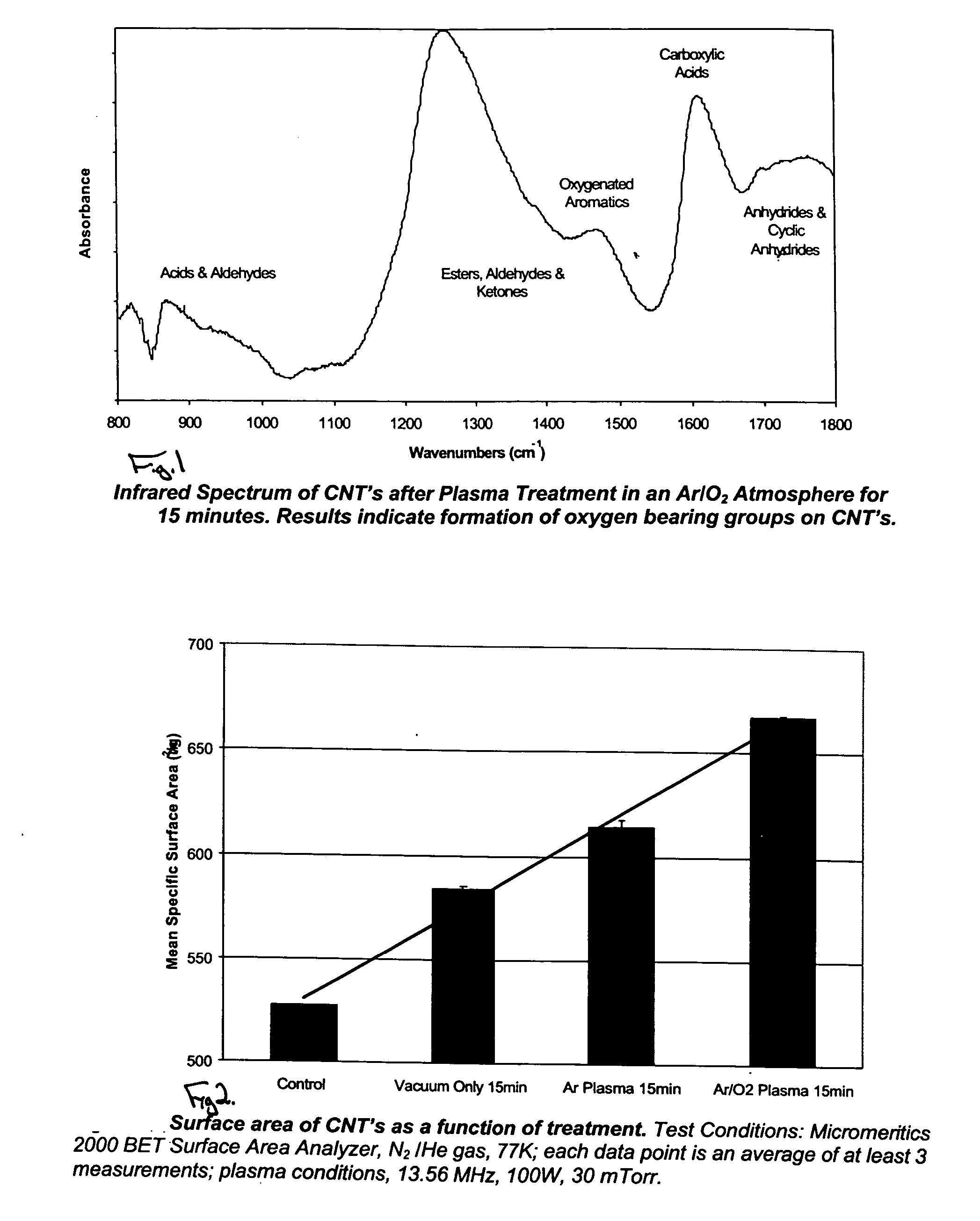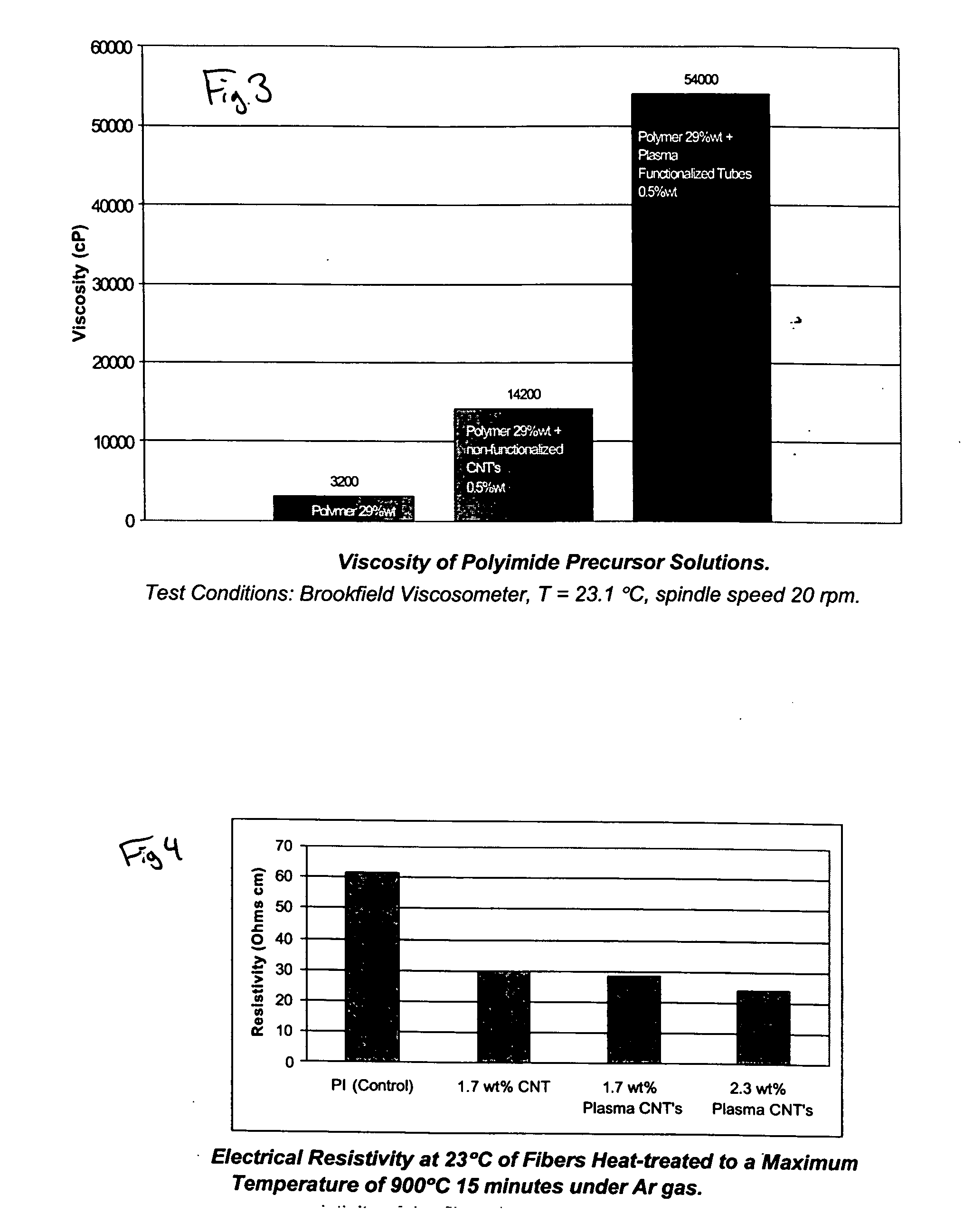Photoresponsive polyimide based fiber
a polyimide and fiber technology, applied in the field of nanostructures, can solve the problems of reducing the minimum separation between, limiting the strength of composite materials, and requiring wearable power storage sources, and achieve the effects of improving tensile strength, improving electrical, mechanical, morphological properties, and improving tensile strength
- Summary
- Abstract
- Description
- Claims
- Application Information
AI Technical Summary
Benefits of technology
Problems solved by technology
Method used
Image
Examples
Embodiment Construction
[0035] The present invention provides a novel method for functionalizing the surfaces (and interior) of nanotube like materials using a plasma source. These plasma-functionalized carbon nanotubes (CNTs) are useful for preparing a variety of different composite fibers having improved characteristics, such as conductivity and mechanical strength. The key innovation being pursued is the development of plasma-based methods for plasma-functionalizing the surfaces of CNTs with reactive chemical groups that covalently bind to polymers and prepolymers.
[0036] Another advantage of using plasma-functionalized CNTs is that the CNTs have a reduced tendency to agglomerate due to stearic factors and are well dispersed in the polymer matrix, as indicated by SEM analysis. The composition of these novel composite fibers can be tailored to optimize the following properties: strong adhesion between the CNTs and the polymer phase, minimal agglomeration of the CNTs, low mass density, electrical- and pho...
PUM
| Property | Measurement | Unit |
|---|---|---|
| temperatures | aaaaa | aaaaa |
| time | aaaaa | aaaaa |
| Temperature | aaaaa | aaaaa |
Abstract
Description
Claims
Application Information
 Login to View More
Login to View More - R&D
- Intellectual Property
- Life Sciences
- Materials
- Tech Scout
- Unparalleled Data Quality
- Higher Quality Content
- 60% Fewer Hallucinations
Browse by: Latest US Patents, China's latest patents, Technical Efficacy Thesaurus, Application Domain, Technology Topic, Popular Technical Reports.
© 2025 PatSnap. All rights reserved.Legal|Privacy policy|Modern Slavery Act Transparency Statement|Sitemap|About US| Contact US: help@patsnap.com



